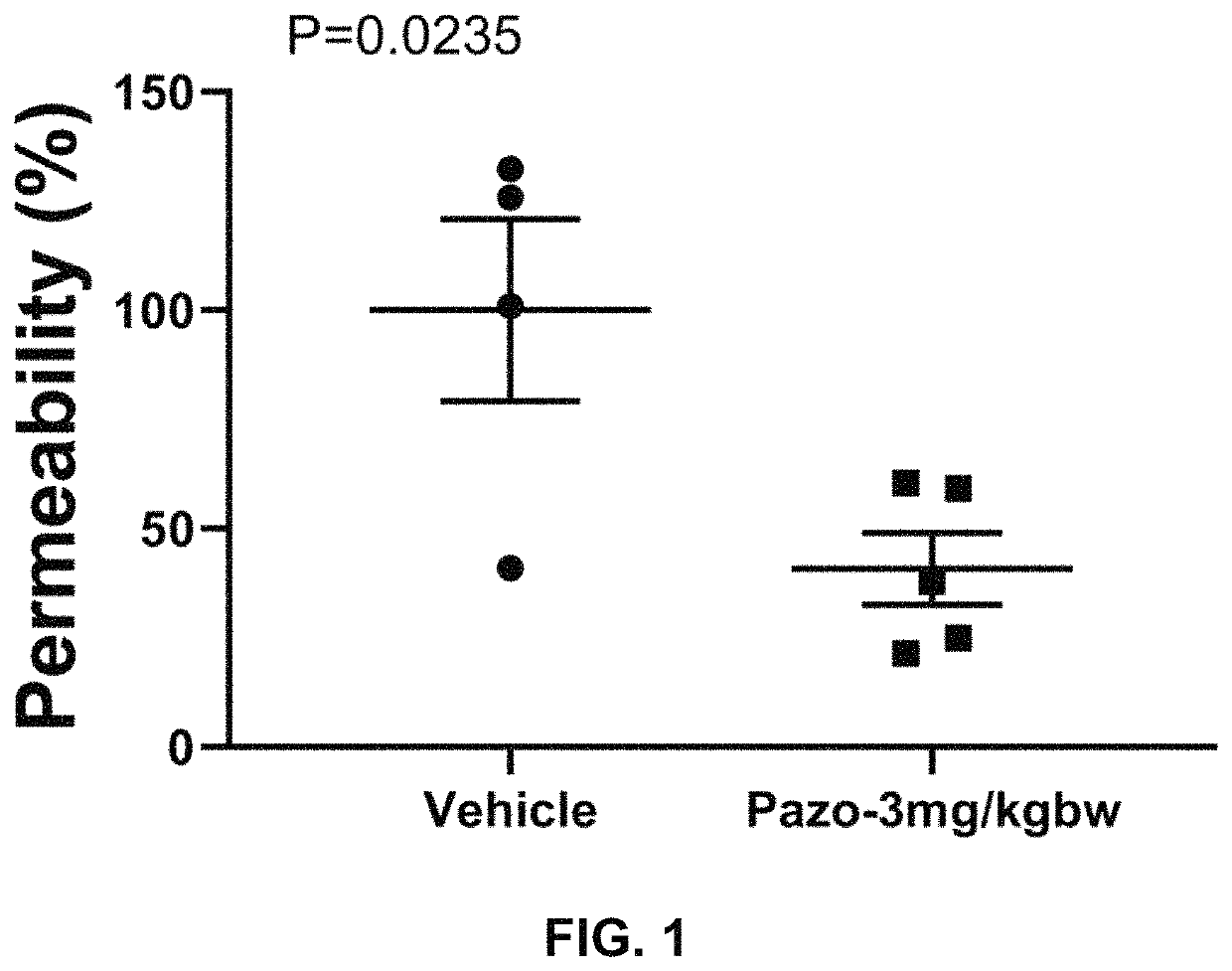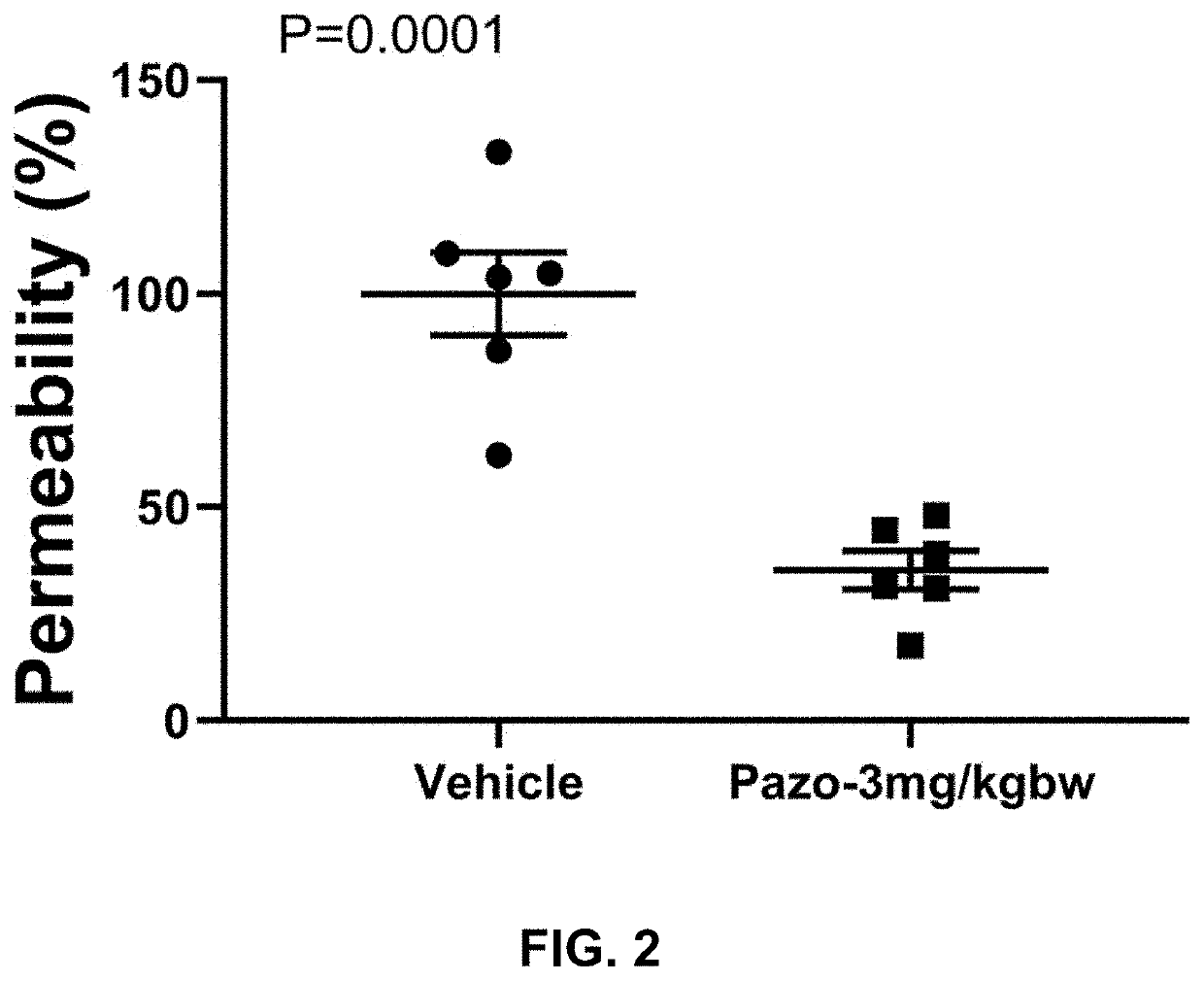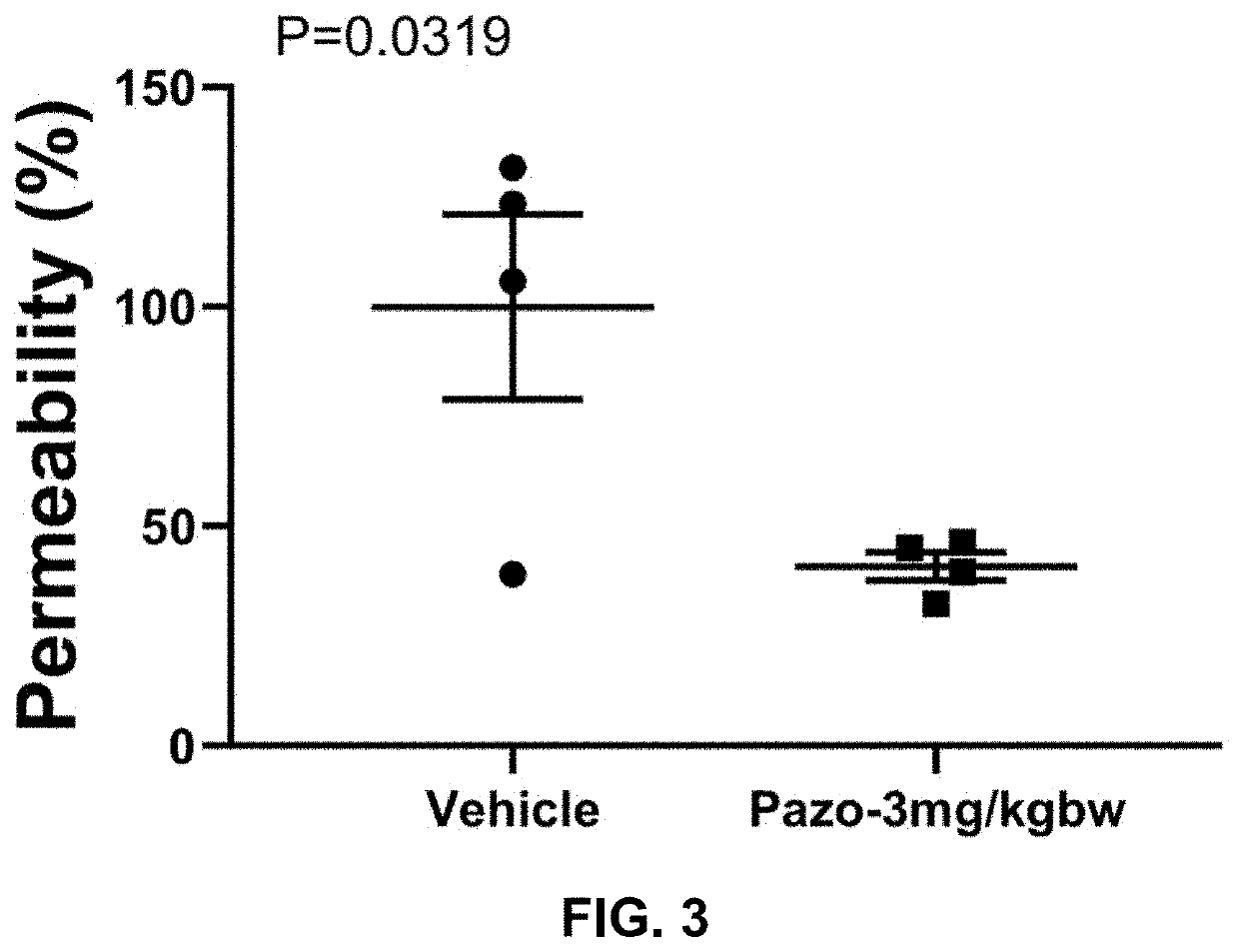Compositions and methods for treating lung injuries associated with SARS-COV-2 infections
a technology of lung injury and composition, which is applied in the field of compositions and methods for treating lung injuries associated with sarscov2 infections, can solve the problems of persistent tissue and organ damage, poor outcomes for those most at risk, and disease can be particularly serious, so as to reduce the severity of lung injury, prevent or treat the effect of lung injury
- Summary
- Abstract
- Description
- Claims
- Application Information
AI Technical Summary
Benefits of technology
Problems solved by technology
Method used
Image
Examples
example 1
tion of Pazopanib on Lung Injuries
[0181]We investigated the effects of the FDA-approved anti-cancer drug pazopanib on lung injuries in a mouse coronavirus-induced pneumonitis mode
[0182]We have strong data to show that pazopanib is a substrate specific inhibitor of MAP3K2 and 3 and that inhibition of these two protein kinases ameliorates lung injury, which is believed to be a major contributor of death associated with COVID-19. To provide further confidence and justification for carrying out human study of the drug on COVID-19 patients, we propose to investigate the effects of pazopanib in a mouse model infected with coronavirus MHV-1, which exhibit lung injury phenotypes similarly to those caused by SARS-CoV.
[0183]The current COVID-19 pandemic is caused by a novel coronavirus, designated as severe acute respiratory syndrome coronavirus 2 (SARS-CoV-2). The disease causes death of about 2% cases probably due to massive alveolar damage and progressive respiratory failure. Published pul...
example 2
on for Inhalation Delivery
[0203]The following composition is prepared using standard mixing equipment and procedures.
[0204]
IngredientAmountPazopanib hydrochloride100 to 800 mg / ml*WaterQS to achieve the indicatedlevels of ingredients*Active amount based on hydrochloride salt
[0205]The pazopanib hydrochloride salt is suspended or dissolved in water with gentle mixing.
[0206]The composition can be packaged in a spray bottle or nebulizer for inhalation administration.
[0207]The composition is useful for treating or preventing lung injury due to or associated with a coronavirus infection.
[0208]In another embodiment, the composition of Example 1 is prepared using nintedanib esylate in place of pazopanib hydrochloride.
example 3
Evaluation of Three Doses of Pazopanib Hydrochloride in Mouse Coronavirus Induced Lung Injury Model
[0209]Purpose:[0210]Evaluate the efficacy of pazopanib hydrochloride composition in coronavirus (Murine Hepatitis Virus Strain 1, MHV-1) induced mouse lung injury model.
[0211]Procedure:
[0212]a. Pazopanib Composition Preparation[0213]1. Put 3.294 ml double distilled water (ddH2O) in a small beaker with a small magnetic stir bar.[0214]2. Weigh 1.663 g 2-Hydroxypropyl-beta-cyclodextrin (HP-b-CD).[0215]3. Add HP-b-CD slowly into the water while stirring.[0216]4. Keep stirring until HP-b-CD completely dissolved.[0217]5. Transfer the HP-b-CD solution into a 15 ml tube.[0218]6. Weigh 43 mg pazopanib hydrochloride and add it into HP-b-CD solution.[0219]7. Vibrate the tube for 5 min followed by 30 min water bath sonication.[0220]8. Then keep the tube in 50° C. for 30 min and pazopanib hydrochloride should be completely dissolved.[0221]Vehicle Stock: 33.26% (332.6 mg / ml) HP-b-CD in ddH2O[0222]St...
PUM
| Property | Measurement | Unit |
|---|---|---|
| time | aaaaa | aaaaa |
| time | aaaaa | aaaaa |
| molar mass | aaaaa | aaaaa |
Abstract
Description
Claims
Application Information
 Login to View More
Login to View More - R&D Engineer
- R&D Manager
- IP Professional
- Industry Leading Data Capabilities
- Powerful AI technology
- Patent DNA Extraction
Browse by: Latest US Patents, China's latest patents, Technical Efficacy Thesaurus, Application Domain, Technology Topic, Popular Technical Reports.
© 2024 PatSnap. All rights reserved.Legal|Privacy policy|Modern Slavery Act Transparency Statement|Sitemap|About US| Contact US: help@patsnap.com










